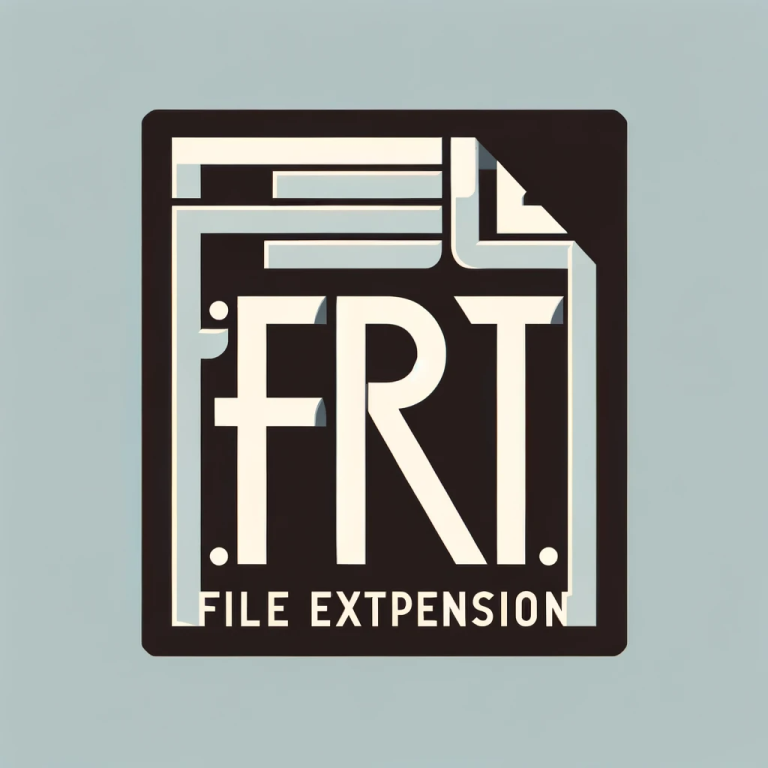.FRT File Extension

FoxPro Report Memo
| Developer | N/A |
| Popularity | |
| Category | Text Files |
| Format | .FRT |
| Cross Platform | Update Soon |
What is an FRT file?
The .FRT file extension primarily pertains to FoxPro Report Memo files. FoxPro, developed by Fox Software and later acquired by Microsoft, was a database management system that enjoyed immense popularity during its heyday.
The .FRT files are associated with the report memo feature of FoxPro, allowing users to store additional information and comments related to reports generated by the software.
More Information.
The .FRT file extension was introduced to address a specific need within the FoxPro community. Users often found it challenging to document and provide context for the reports they generated using FoxPro.
This led to the creation of the .FRT file type, which allowed users to attach memos, notes, and comments directly to the reports.
These memos could contain information about report parameters, data sources, calculations, and any other relevant details.
The primary purpose of .FRT files was to improve collaboration and knowledge transfer among FoxPro users. It allowed developers to share their insights and explanations with colleagues or clients who might not be familiar with the intricacies of a particular report.
This feature proved invaluable in fostering better communication and understanding within the FoxPro ecosystem.
Origin Of This File.
The origin of the .FRT file extension can be traced back to the early days of FoxPro, which was initially released in 1984. As the software evolved, so did its file extensions.
FoxPro was renowned for its robust capabilities in managing databases and generating reports, making it a favorite among businesses and developers.
The .FRT file extension was introduced to enhance the functionality of FoxPro by enabling users to include detailed descriptions and comments within reports, streamlining communication and documentation processes.
File Structure Technical Specification.
To understand the .FRT file extension fully, let’s delve into its technical specifications and file structure. .FRT files are typically binary files that store memo information in a structured format.
The contents of an .FRT file can vary significantly, but they often include:
- Header Information: This section contains metadata about the memo, such as its length, creation date, and author.
- Textual Content: The core of the .FRT file consists of the text-based memo, which can be as short as a single sentence or as long as several paragraphs. This content is often in plain text format.
- Formatting: While the memo content is primarily plain text, .FRT files may include basic formatting instructions, such as font styles or alignment settings.
- Attachments: In some cases, .FRT files may also store references to external files or objects, enabling users to attach additional resources like images or documents to the memo.
How to Convert the File?
Before attempting to open .FRT files, you may need to convert them into more widely supported formats, such as plain text or PDF. Here are some methods for converting .FRT files:
Method 1: Using FoxPro (Windows Only)
- Open FoxPro: If you have access to a Windows machine with a compatible version of FoxPro installed, you can use FoxPro to open and convert .FRT files.
- Open the .FRT File: Launch the FoxPro application, and from the menu, navigate to the option that allows you to open an .FRT file.
- Copy and Paste: Once the .FRT file is open, you can manually copy the memo content and paste it into another application, such as a text editor or word processor.
- Save as Desired Format: After pasting the content, you can save it in a format of your choice, such as plain text (.txt) or PDF (.pdf).
Method 2: Third-Party Conversion Tools
There are third-party tools and utilities available that may offer the ability to convert .FRT files into more common formats. Here’s how to use them:
- Search for Conversion Software: Look for third-party software specifically designed for converting .FRT files. These tools may be available for Windows and sometimes macOS.
- Install and Run the Tool: Download and install the conversion tool on your computer. Follow the instructions provided during installation.
- Select the .FRT File: Open the conversion tool and select the .FRT file you want to convert.
- Choose Output Format: Most conversion tools will allow you to choose the desired output format, such as plain text, PDF, or another compatible format.
- Convert the File: Initiate the conversion process. The tool will convert the .FRT file into the chosen format, and you can save it to your preferred location.
Advantages And Disadvantages.
Advantages:
- Enhanced Documentation: .FRT files provide a means to enhance the documentation of reports, making it easier for users to understand and work with complex reports.
- Improved Collaboration: The ability to attach memos to reports fosters better collaboration among team members, as it allows for the sharing of insights and explanations.
- User-Friendly: The .FRT file format is user-friendly, as it typically stores memo content in plain text, making it easy to read and edit.
Disadvantages:
- Compatibility: .FRT files are specific to FoxPro, and their utility is limited to users of this software. They are not easily accessible in other database management systems or applications.
- Obsolete Software: FoxPro itself has become obsolete, which means that working with .FRT files may require older software or conversion to a more modern format.
How to Open FRT?
Open In Windows
- Use FoxPro: On Windows, you can open .FRT files by launching the FoxPro application, provided you have a compatible version installed. FoxPro was primarily designed for Windows, making it the most straightforward option.
- Third-Party Tools: Some third-party applications and utilities may offer limited support for .FRT files on Windows. These tools might allow you to view or convert .FRT files into more common formats.
Open In Linux
- Use Wine: Linux users can utilize Wine, a compatibility layer, to run Windows applications. Install Wine, and then you can run FoxPro within Wine to open .FRT files. Keep in mind that compatibility can vary depending on your specific Linux distribution and Wine version.
- Third-Party Tools: While less common, there might be third-party tools available for Linux that provide limited support for .FRT files. These tools can help you view or convert .FRT files.
Open In MAC
- Use Windows Emulation: On macOS, you can run Windows emulation software such as Wine or Parallels Desktop. With these tools, you can run Windows applications like FoxPro to open .FRT files.
- Third-Party Tools: Similar to Windows and Linux, there might be third-party tools for macOS that offer limited support for .FRT files.
Open In Android
- Convert and Use a Compatible App: Convert the .FRT file to a more common format like PDF or plain text using a Windows PC or online conversion service. Once converted, you can use any compatible Android app for viewing PDFs or plain text documents to access the content.
Open In IOS
- Convert and Use a Compatible App: Convert the .FRT file to a common format like PDF or plain text using a Windows PC or an online conversion service. After conversion, you can use apps on your iOS device that support PDF or plain text files for viewing the content.
Open in Others
- Convert to Common Format: The most practical approach is to convert .FRT files to a more widely supported format like PDF or plain text using a Windows PC or online conversion service. Once converted, you can explore options specific to your operating system or platform for viewing or working with these formats.













